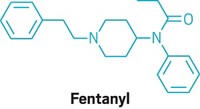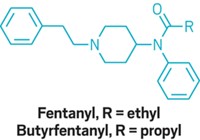Advertisement
Grab your lab coat. Let's get started
Welcome!
Welcome!
Create an account below to get 6 C&EN articles per month, receive newsletters and more - all free.
It seems this is your first time logging in online. Please enter the following information to continue.
As an ACS member you automatically get access to this site. All we need is few more details to create your reading experience.
Not you? Sign in with a different account.
Not you? Sign in with a different account.
ERROR 1
ERROR 1
ERROR 2
ERROR 2
ERROR 2
ERROR 2
ERROR 2
Password and Confirm password must match.
If you have an ACS member number, please enter it here so we can link this account to your membership. (optional)
ERROR 2
ACS values your privacy. By submitting your information, you are gaining access to C&EN and subscribing to our weekly newsletter. We use the information you provide to make your reading experience better, and we will never sell your data to third party members.
Biological Chemistry
Secrets of stimulant abused in Middle East revealed
Vaccines help uncover how “pharmacoterrorism” drug fenethylline works in the body
by Stu Borman
August 17, 2017
| A version of this story appeared in
Volume 95, Issue 33

In the Middle East, the stimulant fenethylline is widely abused by young people. Terrorist organizations such as the Islamic State give it to devotees to enhance their aggression, alertness, fearlessness, motivation, and physical performance. And terrorists involved in the 2015 Paris attacks are suspected to have taken the drug.
When Kim D. Janda of Scripps Research Institute California learned about the fenethylline abuse issue, he wondered why addicts and terrorists latched onto the drug instead of its key metabolite, amphetamine, which acts similarly, is easier to synthesize, and is more readily available than fenethylline. Janda and his colleagues developed a new vaccine-based strategy to find out why. The method could also determine how other complex drugs and their metabolites work in the body.
Fenethylline was first produced by a Degussa subsidiary in 1961 and went by several trade names, the best known of which is Captagon. Doctors in Europe prescribed the drug for about two decades as a stimulant, antidepressant, and treatment for attention deficit hyperactivity disorder. It was never approved in the U.S., and most countries banned it in the 1980s to try to curb its widespread abuse.
In the body, enzymes oxidize fenethylline to produce amphetamine and theophylline. To piece together the effects of fenethylline and these metabolites, Janda, Cody J. Wenthur, and Bin Zhou developed a new multiple-vaccine strategy called Determining the Identities of Species Supporting Expression of CNS Activity through Incremental Vaccination, or DISSECTIV (Nature 2017, DOI: 10.1038/nature23464).
The scientists used vaccines—protein conjugates of fenethylline-, amphetamine-, and theophylline-like molecules—to elicit antibodies that bind to and disable the activity of the parent compound and its metabolites. They dosed vaccinated mice with fenethylline and studied the animals’ responses: anxiety, alertness, and other physiological effects. By analyzing the mice’s responses to antibodies that inhibit the drug and its metabolites alone or in combinations, they determined the effects of each.
They found that fenethylline itself isn’t responsible for the drug’s stimulating effects. Instead, theophylline, which blocks adenosine receptors in the brain, and amphetamine, which enhances dopamine signaling, act together to cause psychoactive effects that are faster and much more potent than those of amphetamine alone. This mechanism provides insight into why people prefer abusing fenethylline over amphetamine, Janda says.
He notes that a dual vaccine against both amphetamine and theophylline could be developed to treat fenethylline addiction in people. Ornella Corazza of the University of Hertfordshire—who is developing policy recommendations on handling fenethylline addiction with Andres Roman-Urrestarazu of the Cambridge Institute of Public Health—says such a vaccine could be “groundbreaking.” But Corazza points out that a vaccine alone won’t solve a complex problem of addiction that also involves terrorists and criminal organizations.





Join the conversation
Contact the reporter
Submit a Letter to the Editor for publication
Engage with us on Twitter